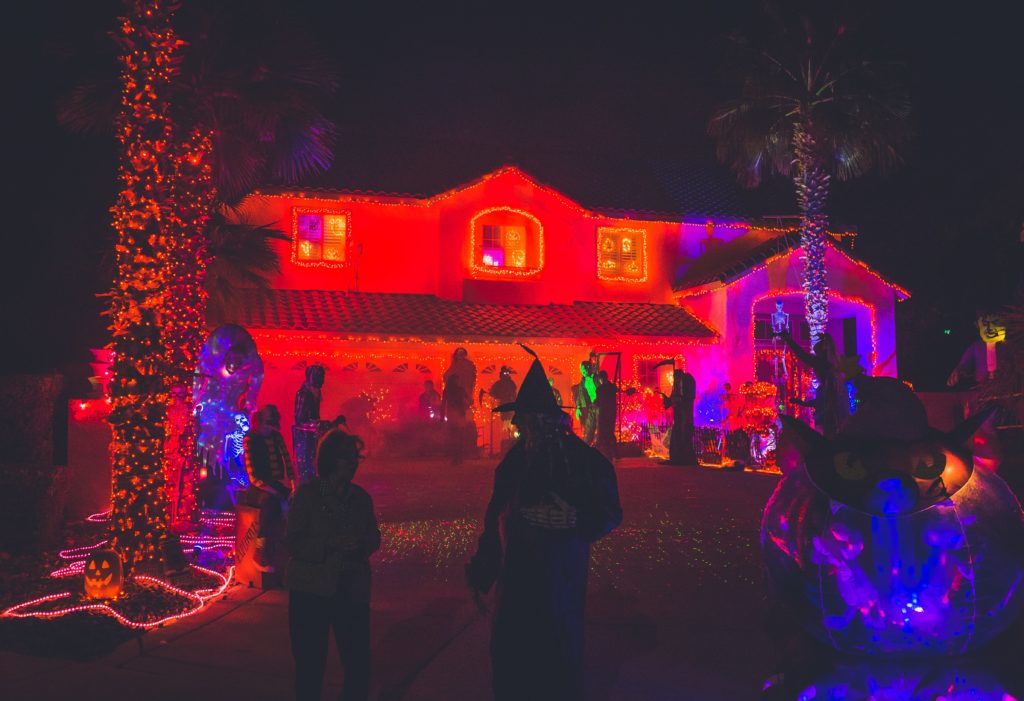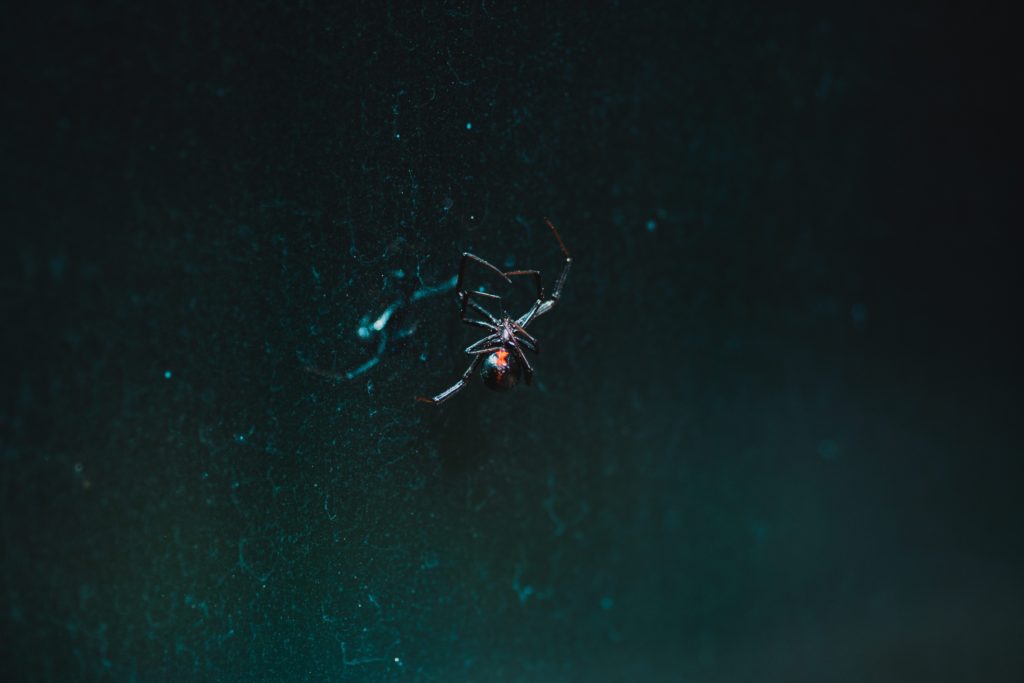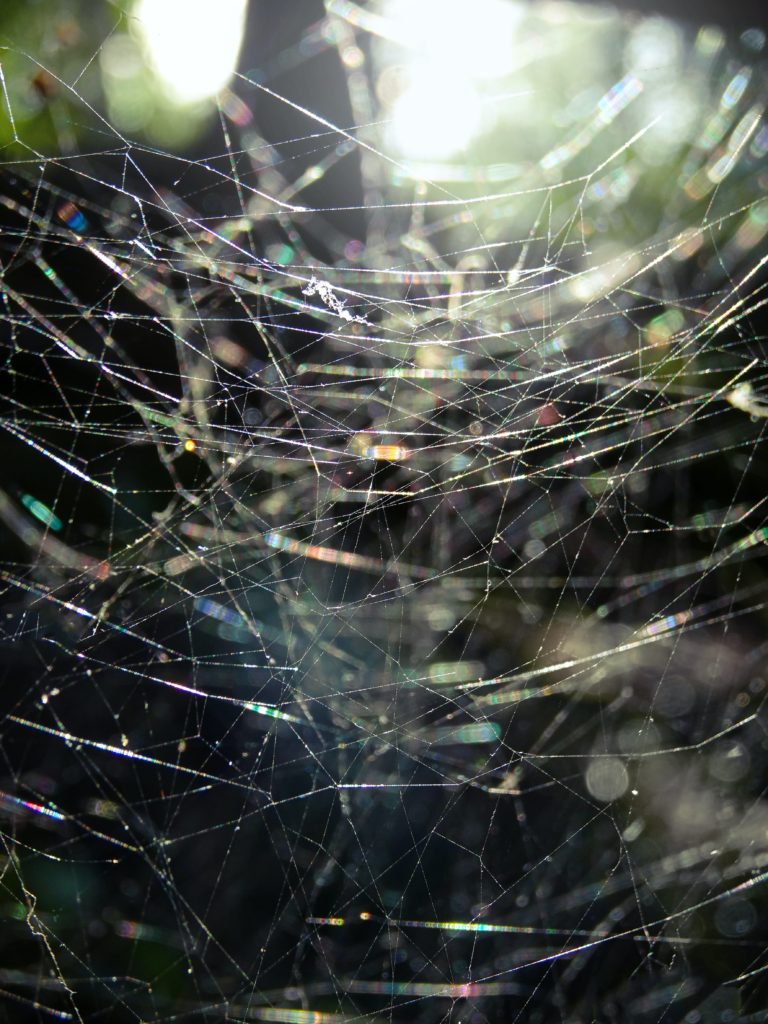
It’s October, fall is officially underway, the heat of summer has faded, and thoughts have turned toward the upcoming holidays. Kicking off the festivities is Halloween, a time to embrace all things creepy, crawly, and anything outright scary. It’s the one time of the year when spiders (at least the plastic kind) are welcomed into our homes and the opinion on spiderwebs is “the more the merrier” (just as long as they’re synthetic). And though just about any spider is creepy enough to use for decorations, the most iconic is assuredly the black widow spider. Possessing venom, a distinctively sinister appearance, and a chilling moniker, it’s no wonder this arachnid is among the most common Halloween decorations.
But just how dangerous are these spiders and what can you do if you find yourself faced with something other than a plastic black widow?

What do Black Widow Spiders Look Like?
Black widow spiders are sexually dimorphic, meaning that the males and females have different appearances. The females have the iconic black widow look, with a round abdomen, a shiny black body, and the famous red hourglass marking on the underside of the abdomen. They are about 1.5 inches long in total, with their body accounting for a little less than a half inch of that length. Males, on the other hand, are smaller, with a body length of just over 1/4 inch, and they lack the distinctive red marking, instead having white lines along their sides.
Are Black Widow Spiders Dangerous?
With venom reportedly 15 times stronger than that of a rattlesnake, it’s safe to say that black widow spiders are a dangerous pest. Their venom is highly virulent and affects the nervous system. The good news is that they are only able to inject a minute quantity of venom with each bite, making their fatality rate relatively low. Still, a black widow bite is no laughing matter with symptoms including severe pain, stiff muscles, nausea/vomiting, difficulty breathing, severe abdominal cramping, weakness, and tremors. For those in high-risk groups (i.e. young children, the elderly, and those who are already ill), a black widow bite should be taken very seriously and medical assistance should be immediately sought.
Where are Black Widow Spiders Found?
The most common places to find these spiders are dry, dark, relatively undisturbed areas either outdoors or indoors. Outside, you are likely to find them under stones, logs, or decks, in wood piles, in tree stumps, or in holes in dirt embankments. Unlike some pests, however, the black widow spider is just as happy, if not more so, to make its home indoors. Look for them in barns, sheds, garages, basements, and crawl spaces, especially in sections that offer more harborage areas. As with most predatory pests, the black widow spider will be looking for areas that offer plenty of accessible food sources, so any places of your home that have conducive conditions for pests like ants, beetles, roaches, and scorpions will be prime real estate.

What are the Signs of a Black Widow Infestation?
Other than seeing the spiders themselves, keep an eye out for webs in the areas black widows like to call home. Their webs are irregular, close to the ground, usually less than 1 foot in diameter, and can often have a retreat (a small, less than 1/4 inch, circular silken tent where the spider lives). In addition, keep an eye out for egg sacs suspended on the webs. These sacs are light-colored (white, tan, or gray), pear or circle shaped, have a papery texture, are between 1/4 to 1/2 inch in diameter, and can contain over 400 eggs. That’s a lot of potential baby black widows.
How did they get their Name?
These spiders get their ominous name from the belief that the females often consume male black widows after mating. However, though this behavior has been observed many times in captivity (where the males had no way to escape), it is much less common in real-world scenarios.
How do you Prevent Black Widow Spiders?
There are two important steps to take to keep your home and yard from becoming a haven for black widows. First, you need to declutter all areas that would be an attractive site for these spiders to spin their webs. This means keeping your yard free from debris, cleaning out any woodpiles, and regularly cleaning any sheds or storage spaces in your yard. Inside your home it’s pretty much the same story: declutter. Keep all storage areas and less-frequented spaces (like garages, attics, crawl spaces, etc.) tidy and remove any excess stuff that a black widow could hide in or under.
The second step is to maintain regular pest control, call The Bug Dude at 817-354-5350. By keeping the insect population in your home and yard to a minimum, you will limit the spider’s food supply and make your home a much less inviting space. Remember, a black widow finds fire ants a tasty treat, so by getting rid of them in your yard and home not only do you not have to deal with the hazards of those ants, you also help minimize the likelihood a black widow spider will take up residence in your home.

How do you Eliminate Black Widow Spiders?
If you see evidence of black widow spiders in your home or yard, call The Bug Dude at 817-354-5350 immediately. Though they make an excellent Halloween decoration, a real black widow is certainly no treat to find lurking in your home. Our experienced technicians will eliminate the spider threat and let you get back to enjoying the non-venomous scares of the season.
Further Reading:
“Southern Black Widow Spider” – Field Guide to Common Texas Insects – Texas A&M AgriLife Extension
“Black Widow Spiders” – PestWorld.org
“Black Widow Spider Bite” – WebMD
“This Bites: Venomous Spiders in Texas” – Texas Department of State Health Services
Author Bio: Alissa Breach has been gaining knowledge and experience around pest control concerns over the last 11 years while working for Mid-Cities Pest Control. She has a creative writing BA from UW-Madison and is always pursuing new and interesting writing projects.




